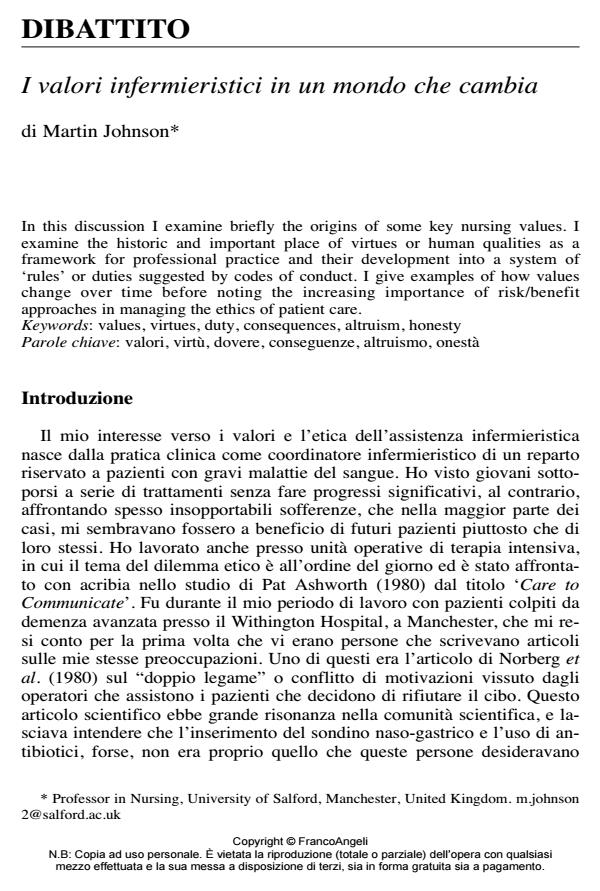I valori infermieristici in un mondo che cambia
Journal title SALUTE E SOCIETÀ
Author/s Martin Johnson
Publishing Year 2013 Issue 2013/3
Language Italian Pages 16 P. 171-186 File size 133 KB
DOI 10.3280/SES2013-003013
DOI is like a bar code for intellectual property: to have more infomation
click here
Below, you can see the article first page
If you want to buy this article in PDF format, you can do it, following the instructions to buy download credits

FrancoAngeli is member of Publishers International Linking Association, Inc (PILA), a not-for-profit association which run the CrossRef service enabling links to and from online scholarly content.
In this discussion I examine briefly the origins of some key nursing values. I examine the historic and important place of virtues or human qualities as a framework for professional practice and their development into a system of ‘rules’ or duties suggested by codes of conduct. I give examples of how values change over time before noting the increasing importance of risk/benefit approaches in managing the ethics of patient care.
Keywords: Values, virtues, duty, consequences, altruism, honesty
Martin Johnson, I valori infermieristici in un mondo che cambia in "SALUTE E SOCIETÀ" 3/2013, pp 171-186, DOI: 10.3280/SES2013-003013